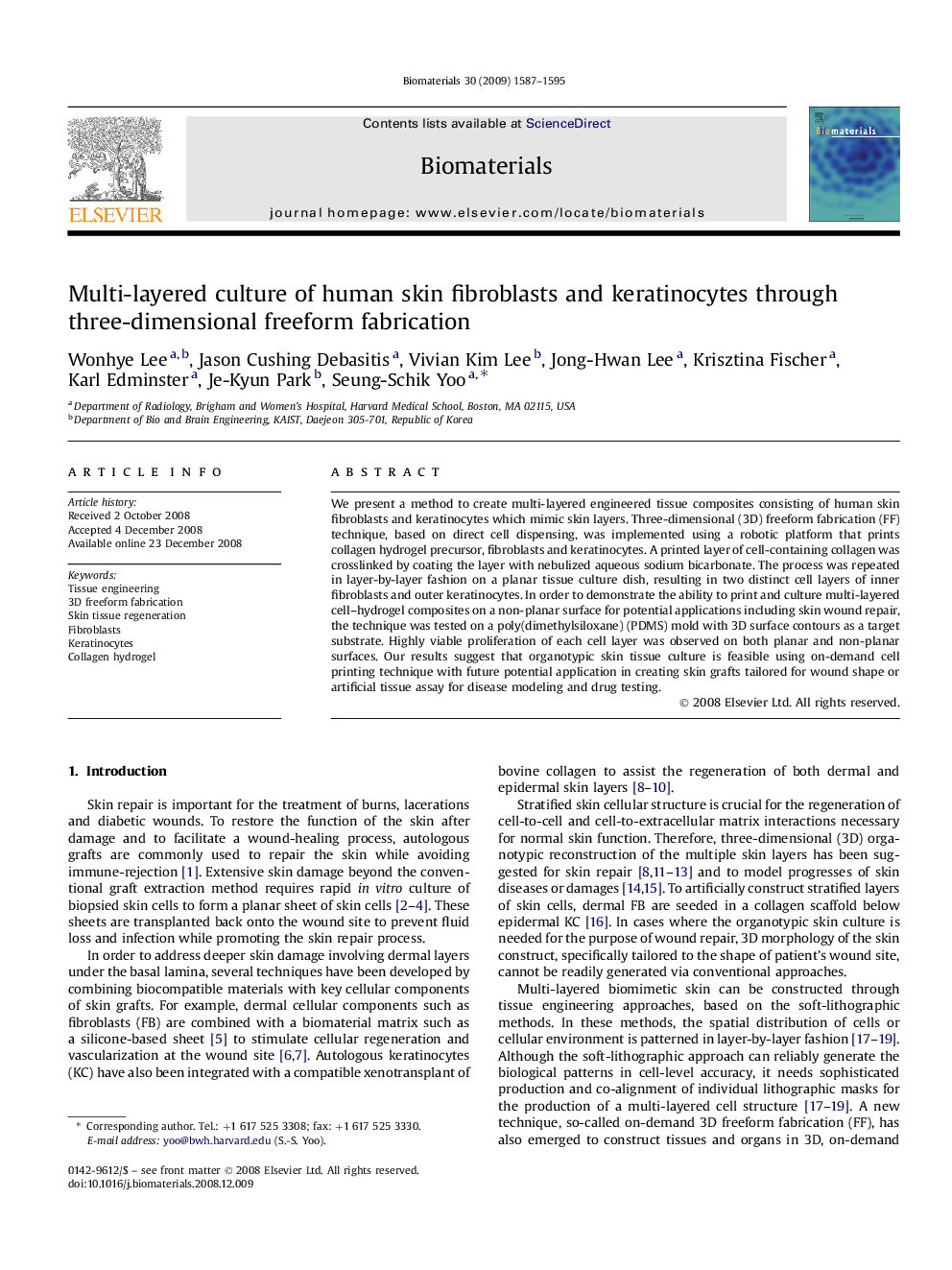| Article ID | Journal | Published Year | Pages | File Type |
|---|---|---|---|---|
| 10162 | Biomaterials | 2009 | 9 Pages |
We present a method to create multi-layered engineered tissue composites consisting of human skin fibroblasts and keratinocytes which mimic skin layers. Three-dimensional (3D) freeform fabrication (FF) technique, based on direct cell dispensing, was implemented using a robotic platform that prints collagen hydrogel precursor, fibroblasts and keratinocytes. A printed layer of cell-containing collagen was crosslinked by coating the layer with nebulized aqueous sodium bicarbonate. The process was repeated in layer-by-layer fashion on a planar tissue culture dish, resulting in two distinct cell layers of inner fibroblasts and outer keratinocytes. In order to demonstrate the ability to print and culture multi-layered cell–hydrogel composites on a non-planar surface for potential applications including skin wound repair, the technique was tested on a poly(dimethylsiloxane) (PDMS) mold with 3D surface contours as a target substrate. Highly viable proliferation of each cell layer was observed on both planar and non-planar surfaces. Our results suggest that organotypic skin tissue culture is feasible using on-demand cell printing technique with future potential application in creating skin grafts tailored for wound shape or artificial tissue assay for disease modeling and drug testing.
